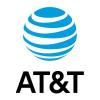Coronavirus and Connectivity
How courageous schools partnering with local communities can overcome digital inequalities during COVID-19
Leveraging high-speed broadband access, I present several ideas for ensuring all K-12 students can learn during a time of in-person schooling shutdowns and other uncertainties: transform vacant local establishments into classrooms and provide technology access through unused business equipment; enable Wi-Fi in federally assisted housing or in parked school buses; reconfigure digital parking lots into digital parks; and utilize local organizations to help solve local digital access challenges.
Big Tech spent millions to close California’s digital divide this year. It’s hardly making a dent.
In the early days of the COVID-19 pandemic, California estimated that 1 million of its 6.2 million school kids didn't have the equipment they needed for virtual learning, prompting leaders from across the tech industry to immediately open their wallets to help. But six months later, with school back in session, only a fraction of the devices those contributions were supposed to purchase are actually in students' hands. Amassing these donations, it turns out, was the easy part.

New America Slams FCC’s ‘Failed Leadership’
New America's Open Technology Institute sent a letter to the House of Representatives in advance of a hearing on oversight of the Federal Communications Commission, highlighting many failures and lost opportunities over the past four years at the agency, including:
Comcast Announces Multiyear Effort to Roll Out 1,000+ WiFi-Connected 'Lift Zones' in Local Community Centers Nationwide
Comcast announced a multiyear program to launch more than 1,000 Wi-Fi-connected “Lift Zones” in community centers nationwide. Working with its network of thousands of nonprofit partners and city leaders, Comcast will provide Wi-Fi in facilities they have identified to help students get online, participate in distance learning, and do their schoolwork. The initiative will provide not only free Internet connectivity, but also access to hundreds of hours of educational and digital skills content to help families and site coordinators navigate online learning.
The latest crisis: Low-income students are dropping out of college this fall in alarming numbers
As fall semester gets into full swing in the midst of the coronavirus pandemic, schools are noticing a concerning trend: Low-income students are the most likely to drop out or not enroll at all, raising fears that they might never get a college degree.
Distance learning while homeless in the Twin Cities: It’s complicated and challenging
Prior to the pandemic and resulting shift to distance learning, the St. Paul Public Schools district had already deployed a one-to-one iPad program, districtwide. District staff still had to troubleshoot internet access issues with families — and efforts have been made to help deliver hotspots and devices to students who may be doubled up with other families in neighboring communities.

6 Months In: Unyielding Connections in the Age of COVID-19
We have sustained experience and responsibilities like few other companies during the coronavirus pandemic. You don’t design a network for a pandemic per se. But it turns out that investing more than $135 billion over the past 5 years1 to build a robust network with self-healing architectures and open standards can help ready it for just about anything. Today, we’re continuing to see high demand for more connectivity-based services and our network is performing well.

Understanding the Potential Cost of an Expanded Lifeline Program
As Congress debates increases to the Lifeline benefit, it should also ensure that funds are directly appropriated to support any benefit increase or otherwise ensure that the Universal Service Fund funding mechanism is significantly reformed. Relying on decades-old funding approaches will only serve to undermine the goal of providing 21st-century broadband connectivity to Lifeline eligible households.
Chairman Pai's Response to Reps. Trone, Hoyer, Ruppersberger, Sarbanes, Harris, Brown and Raskin Regarding RDOF
On April 9, Reps David Trone (D-MD), Steny Hoyer (D-MD), Dutch Ruppersberger (D-MD), John Sarbanes (D-MD), Andy Harris (R-MD), Anthony Brown (D-MD, and James Raskin (D-MD) wrote to Federal Communications Commission Chairman Ajit Pai about the Rural Digital Opportunity Fund (RDOF), particularly calling to revise eligibility for the program so that states with existing investments to build out their capacity are not disqualified from receiving RDOF funding.

Chairman Pai Response Regarding Keeping Low-Income Americans Connected
On Aug 13, 2020, House Commerce Chairman Frank Pallone (D-NJ) led Democratic Communications Subcommittee members in writing to Federal Communications Commission Chairman Ajit Pai to urge the FCC to provide unlimited voice minutes and unlimited mobile data to Lifeline recipients, with an increase in the basic support amount to offset any associated incremental costs, for the duration of the coronavirus pandemic.

